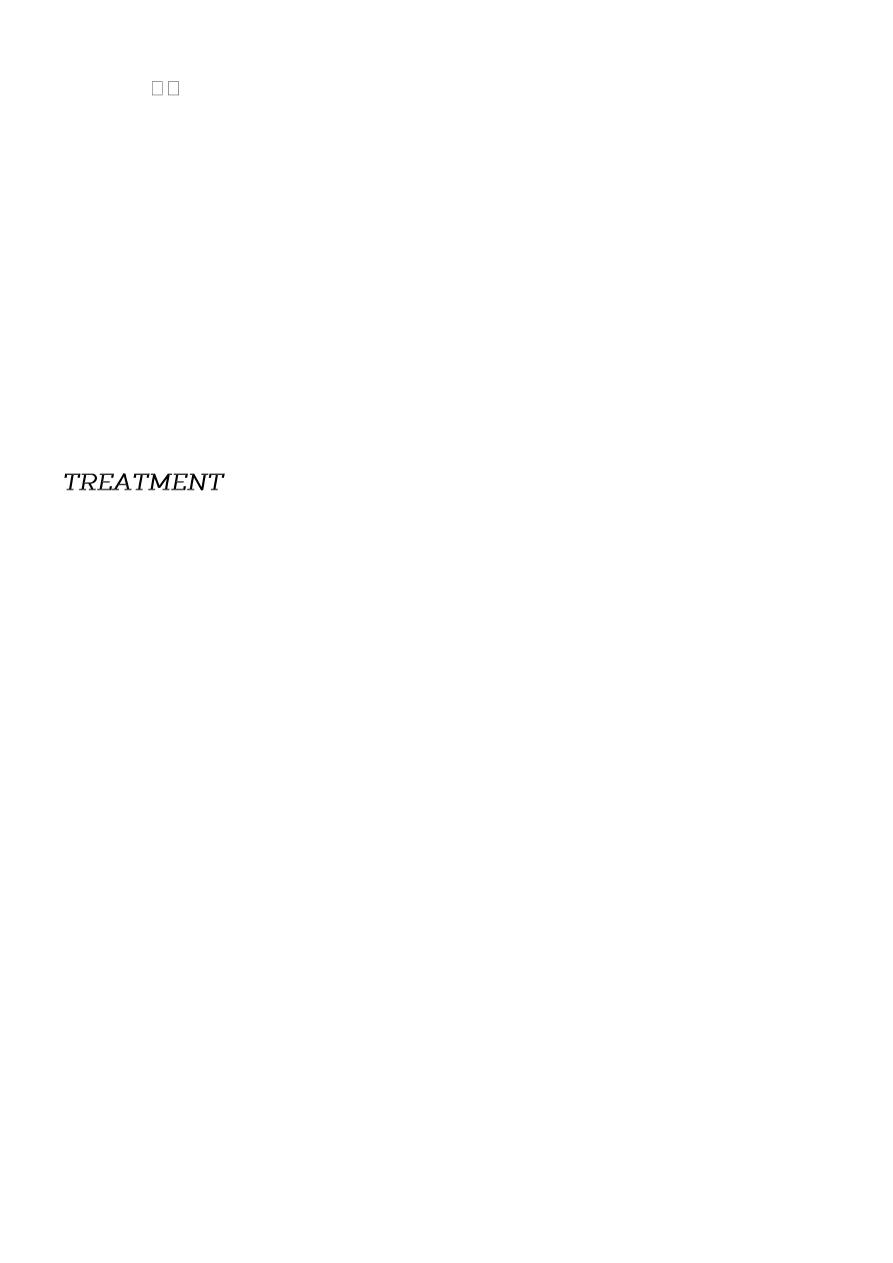
1
IMMUNE DEFICIENCY
Immune deficiency may arise through
1. primary ,intrinsic defects in immune function,
2. but is much more commonly due to secondary causes
The consequences(complications) of deficiencies of the immune system include
1- recurrent infections,
2- autoimmunity and
3- susceptibility to malignancy.
Presenting problems in immune deficiency is
Recurrent infections
Frequent, severe infections or infections caused by unusual organisms or at unusual
sites are the most useful indicator.
Warning signs of immune deficiency
_ ≥ 8 ear infections within 1 year
_ ≥ 2 serious sinus infections within 1 year
_ ≥ 2 months on antibiotics with little effect
_ ≥ 2 pneumonias within 1 year
_ Failure of an infant to gain weight or grow normally
_ Recurrent deep skin or organ abscesses
_ Persistent thrush in mouth or elsewhere on skin after infancy
_ Need for intravenous antibiotics to clear infections
_ ≥ 2 deep-seated infections such as sepsis, meningitis or cellulitis
_ A family history of primary immune deficiency
If an immune deficiency is suspected but has not yet been formally characterised,
patients should not receive live vaccines because of the risk of vaccine-induced disease.
1. PRIMARY IMMUMEDEFICIENCY
A. Primary deficiency in innate immune system
1. Primary phagocyte deficiencies

2
2. Leucocyte adhesion deficiencies
These are disorders of phagocyte migration, when failure to express adhesion
molecules on vascular endothelium results in the inability of phagocytes to exit the
blood stream.
3. Defects in cytokines and cytokine receptors
Defects of cytokines such as IFN-γ, IL-12 or their receptors also result in failure of
intracellular killing, and individuals are particularly susceptible to mycobacterial
infections..Q WHY INTRA
4. Complement pathway deficiencies
Genetic deficiencies of almost all the complement pathway proteins have been
described.
C.F
1. recurrent infection with encapsulated bacteria, particularly Neisseria species.
2. a -high prevalence of autoimmune disease, particularly systemic lupus
erythematosus
3-Deficiency of the regulatory protein C1 esterase inhibitor is not associated with
recurrent infections but causes recurrent angioedema.
B. Primary deficiencies of the adaptive immune system
1. Primary T-lymphocyte deficiencies
These are characterised by recurrent viral, protozoal and fungal infections . In addition,
many T-cell deficiencies are associated with defective antibody production because of
the importance of T cells in providing help for B cells.
2. Combined B- and T-lymphocyte immune deficiencies
causes recurrent bacterial, fungal and viral infections soon after birth. Bone marrow
transplantation is the only current treatment option, although specific gene therapy is
under investigation.
3. Primary antibody deficienciesMORE IN ADULT
characterised by recurrent bacterial infections, particularly of the respiratory and
gastrointestinal tract
A. SELECTIVE IMMUNOGLOBULIN A DEFICIENCY
Selective IgA deficiency is the most common primary immunodeficiency disorder and is
characterized by serum

3
IgA levels
15 mg/dL with normal levels of IgG and IgM; its prevalence is about 1:500
individuals.
CL.F
1. Most persons are asymptomatic because of compensatory increases in secreted IgG
and IgM.
2. frequent and recurrent infections, such as sinusitis, otitis, and bronchitis.
3. Individuals with selective IgA deficiency may have high titers of anti-IgA antibodies
and are at risk for anaphylactic reactions following exposure to IgA through
infusions of plasma (or blood transfusions). These anti-IgA antibodies develop in the
absence of prior exposure to human plasma or blood, possibly due to crossreactivity
to bovine IgA in cow’s milk or prior sensitization to maternal IgA in breast milk.
Some cases of IgA deficiency may spontaneously remit. Treatment with commercial
immune globulin is ineffective, since IgA and IgM are present only in trace quantities in
these preparations
B- Common variable immune deficiency (CVID)
intrinsic B cell defects that prevent terminal maturation into antibody-secreting
plasma cells.
The absolute B cell count in the peripheral blood is normal
It is characterised by low serumIgG levels but over time all antibody classes (IgG,
IgA, and IgM)may be affected . and failure to make antibody responses to
exogenous pathogens.
CLINICAL FEATURES By
1. an increased incidence of recurrent infections,
2. autoimmune phenomena, Paradoxically, antibody-mediated autoimmune diseases
such as idiopathic thrombocytopenic purpura and autoimmune haemolyticanaemia
are common autoimmune endocrinopathies, seronegativer heumatic disease, and
gastrointestinal disorders arealso commonly seen
3. and neoplastic diseases There is an increased propensity for the development of B
cell neoplasms (increase risk of lymphoma), gastric carcinomas, and skin cancers

4
INVESTIGATION
specific antibody responses to known pathogens should be assessed by measuring IgG
antibodies against tetanus, H. influenzae and Strep. pneumoniae .
(most patients will have been exposed to some of these antigens through either
infection or immunisation). If specific antibody levels are low, immunisation with the
appropriate killed vaccine should be followed by repeat antibody measurement 6-8
weeks later; failure to mount a response indicates a significant defect in antibody
production. These functional tests have generally superseded IgG subclass
quantitation.
Management
1. All patients with antibody deficiencies require aggressive treatment of infections
and prophylactic antibiotics may be indicated.
2. The mainstay of treatment is immunoglobulin replacement (intravenous
immunoglobulin, IVIgGcontains IgG antibodies to a wide variety of common
organisms. IVIgG is usually administered every 3-4 weeks with the aim of
maintaining trough IgG levels within the normal adult range. Treatment may be self-
administered and is life-long.
With the exception of selective IgA deficiency, immunisation is generally not effective
because of the defect in IgG antibody production. As with all primary immune
deficiencies, live vaccines should be avoided.
2. Secondary immune deficiencies
Secondary immune deficiencies are much more common than primary immune
deficiencies).
Causes of secondary immune deficiency
Physiological
Ageing
Prematurity
Pregnancy

5
Infection
S HIV
S Measles
S Mycobacterial infection
Iatrogenic
Immunosuppressive therapy
Antineoplastic agents
Corticosteroids
Stem cell transplantation
Radiation injury
Anti-epileptic agents
Malignancy
K B-cell malignancies including leukaemia, lymphoma and myeloma
K Solid tumours
K Thymoma
Biochemical and nutritional disorders
Malnutrition
Renal insufficiency/dialysis
Diabetes mellitus
Specific mineral deficiencies, e.g. iron, zinc
Other conditions
l Burns
l Asplenia/hyposplenism
T-CELL IMMUNODEFICIENCIES
Acquired immunodeficiency syndrome (AIDS)
By far the most common immunodeficiency worldwide is that due to infection with the
human immunodeficiency virus (HIV), the cause of AIDS. Although the most profound
deficiency is in CD4 T-cells, B cells are also affected to give a mixed pattern.

6
Mechanisms of CD4 loss/dysfunction in HIV infection
1- Direct cytopathic effects of HIV
2- Lysis of infected cells by HIV-specific cytotoxic Tcells
The central and most characteristic is the progressive and severe depletion of CD4
+
'helper' lymphocytes. As described earlier, these cells orchestrate the immune response,
responding to antigen presented to them via antigen-presenting cells in the context of
class II MHC. They (CD4)proliferate and release cytokines, particularly
1. IL-2. This leads to proliferation of other reactive T-cell clones, including cytotoxic T
cells, (which eradicate viral infections),
2. gamma-interferon (which activates NK cells to cytotoxicity) and macrophages
(microbicidal activity against intracellular pathogens). Loss of this single cell type can
therefore explain nearly all the immunological abnormalities of AIDS
Q1- component of innate immunity
Q2- what is HLA
Sara Abdulbasit
